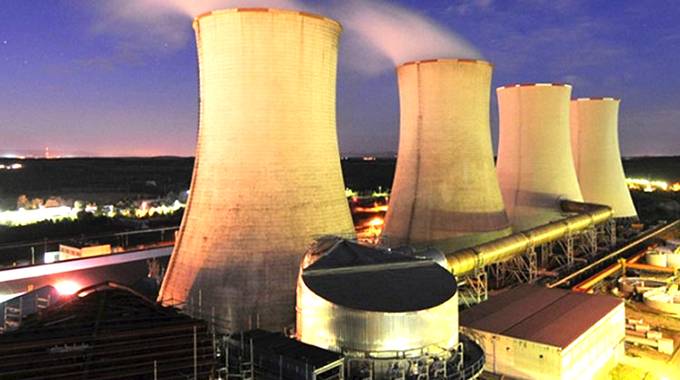
The Sunday News

Harare Bureau
KARIBA South Hydro Power Station will no longer have to shut down even though it has exhausted its water allocation for this year, but is limited to an average of 300 megawatts, half what it was able to use before, until more water starts flowing into the lake.
Energy and Power Development Minister Zhemu Soda, giving the news for Kariba, said on Friday that Zesa Holdings was also pushing output at its thermal power stations to a total of 445MW, was seeking the independent power producers already on grid to maximise output, was seeking to improve imports, and was in the process of testing the new 300MW Unit 7 at Hwange Thermal with this expected to be feeding the grid later this month once all tests and resulting adjustments are complete.
At the same time, consumers have been asked to conserve power, and businesses commissioning solar power, or adding to solar power, have been urged to push ahead with zero licensing required for any power source under 5MW to make this as easy as possible and still allow the companies to sell surplus to Zesa Holdings.
The Zambezi River Authority (ZRA), which manages the Kariba Dam and Lake Kariba and works out how much water Zimbabwe and Zambia can use, had allocated each power station 22,5 billion cubic metres for this year.
By late last month Zesa’s generating subsidiary, the Zimbabwe Power Company, had used up this ration implying that what was left in live storage in Lake Kariba, the water above the inlets to the power stations, was reserved for Zesco of Zambia.
However, a new agreement has been hammered out by ZRA that allows Zimbabwe to generate 300MW at Kariba South while Zambia can use more than double at Kariba North.
In his announcement Minister Soda said: “Zimbabwe Power Company (ZPC) has indeed exhausted its water allocation for the year. However, Kariba South Power Station will not shut down completely.
Rather it will continue to generate but at a reduced capacity of up to 300MW daily average pending a review of the water situation at the dam in January 2023. This means that the power station has the latitude to vary its capacity as long as it maintains within the required average capacity. The reduction of capacity at Kariba Hydro Power Station results in a loss of 300MW in capacity that the ministry is addressing,” he said.
The Ministry of Energy has come up with measures, through Zesa Holdings and independent power producers, to mitigate the power challenges. In addition, said Minister Soda, Zesa was negotiating for additional imports from the current suppliers, with more power expected to be secured through the Southern African Power Pool market.
“We are also increasing production from local power generation installations such as Hwange Thermal Power Station and ZPC will ramp up production at the power station to average 400MW. ZPC will also ramp up production at small thermals to produce a combined total of 45MW,” said Minister Soda.

Hwange Thermal Power Station
Support will be given to all independent power producers to enable them to produce at maximum capacity, especially Zimbabwe ZhongXin Electrical Energy.
Minister Soda said other measures included the commissioning of new capacity such as Unit 7 at Hwange Power Station, which is undergoing technical processes for commissioning and will start feeding power into the grid later this month. Once Unit 7 has been commercially commissioned, Unit 8 will follow early next year and give Zimbabwe an additional 600MW.
Minister Soda urged consumers to reduce load by employing energy conservation and efficiency measures such as switching off lights in all offices at night and using right size equipment, and energy savers.
“Through SI 38 of 2022, net-metering regulations were amended to exempt from licensing a capacity of up to 5MW. This incentive is expected to result in increased internal generation as companies set up their own solar generation systems,” he said.
Solar projects including the Caledonia Mine/Blanket Mine will produce 12MW when completed, while the Richo Solar project will generate 1,3MW and Guruve 1,2MW.
Said Minister Soda: “Over and above the measures, Government is pursuing a medium to long term plan to meet the power needs of the end. Government has also identified some solar sites where it will fast-track implementation and pre-feasibility studies have already been done.”
While high output at the Kariba stations relies on water stored during the annual floods, the Zambezi never runs dry. Every day water flows over the Victoria Falls and this water soon arrives in the lake, although very little is added in the dry season from Matabeleland North, Mashonaland West or Zambia’s Central Province. This daily inflow means that some power can be generated without using the stored reserves, even in the low-water season now being experienced.
In fact, even if the storage was used up, the daily inflows would still have to be pushed through the power stations to ensure that the river did not run dry between the dam wall and the Kafue confluence.
Also on Friday, Zambian Energy Minister Peter Kapala announced the same arrangement at Kariba and while Zesco can generate more than Zesa at Kariba, it will need its other sources at the two Kafue Dams, the lower reusing the water from the upper, and the little it gets from small hydros and the Victoria Falls and what its own independents are now feeding into that grid. Zambia will also be looking for imports. Zambia has no thermal power. — The Herald.



